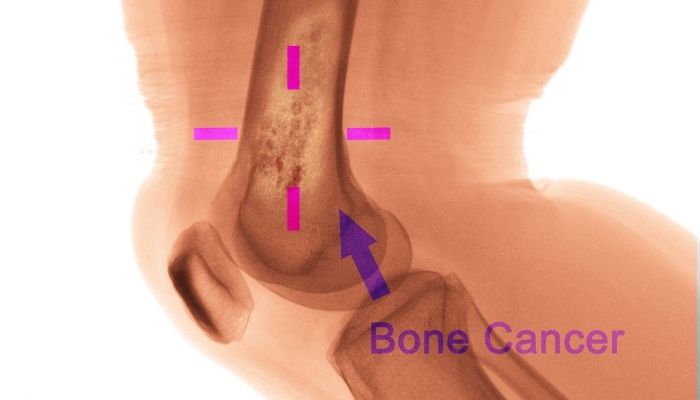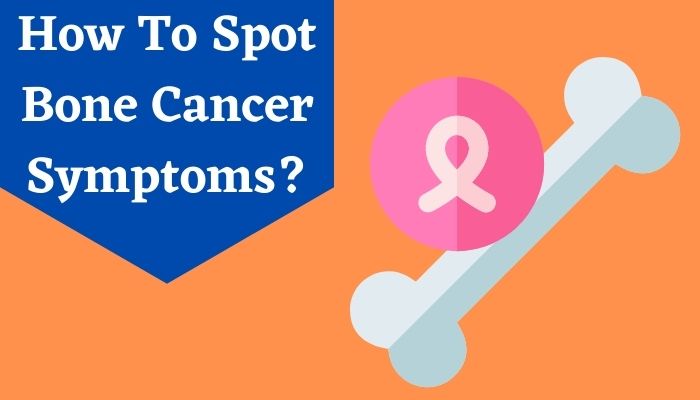Healthy bones help to prevent bone fractures. But bones too can get affected by some diseases like bone cancer. Cancer, the word itself sounds deadly and when it comes with bones, it can turn into a matter of great worry. The worst thing is that those who suffer from bone cancer, are not even able to detect the bone cancer symptoms.

Bone cancer, also known as Osteosarcoma is not a common type of cancer. It hardly spreads to other parts of the body like other types of cancers. Bone cancer can be of two types, primary, and secondary bone cancer.
Let us dig deeper to understand more about Osteosarcoma cancer and bone cancer symptoms.
What is Osteosarcoma Cancer?
Osteosarcoma or bone cancer is cancer that affects your bones. Starting from regular bone cells, cancer cells in this type of cancer generate irregular and immature bones. Osteosarcoma is generally seen in the long bones of arms and legs. It is most commonly found in teenagers of age 15 to 19. As compared to other types of cancers, bone cancer is rare and most of the tumors in the bone are benign and don’t spread to other body parts.Types of Bone Tumors
Listed below are some common types of bone tumors:1. Osteochondroma
This is the most common type of bone tumor that affects people under the age of 20.2. Osteoblastoma
It is a rare type of bone tumor that grows in long bones and spines.3. Osteoid Osteoma
This bone tumor affects the long bones in people in their early 20s.4. Enchondroma
This bone tumor affects the feet and hands. It usually shows no symptoms.5. Giant Cell Tumor
This bone tumor usually affects the leg. In only rare cases, it becomes cancerous and fatal.Types of Bone Cancer
1. Primary Bone Cancer
Primary bone cancer is classified into four main types:2. Osteosarcoma
This is the most common type of bone cancer that affects the new bone tissues. It is commonly seen in children and teenagers. The areas affected by osteosarcoma are the arms and legs.3. Chondrosarcoma
This type of bone cancer starts in a soft connective tissue called cartilage. It is found in legs, arms, and pelvis bones. It is usually seen in adults more than in teenagers.4. Ewing Sarcoma
This type of sarcoma is benign and forms in the soft tissues or bones around soft tissues. It is mostly found in the shoulder blades, hips, and ribs. Sometimes, it is also found in the long bones like legs.5. Chordoma
This is a rare type of bone cancer that grows in the spine region. It is also seen in adults more than in children or teenagers. Moreover, women tend to suffer from it more than men.6. Secondary Bone Cancer
A bone tumor in any other part of the body is considered secondary bone cancer. Any bone cancer that spreads to other parts of the body is called secondary bone cancer like lung cancer, breast cancer, and prostate cancer.Bones Affected by Bone Cancer
Osteosarcoma generally affects the following bones:- The Femur or the Thigh Bone
- The Tibia or the Shin Bone
- The Humerus or the Upper Arm Bone
Osteosarcoma Causes
Experts are not able to detect the exact causes of osteosarcoma. However, they find there are some links between certain factors that may lead to bone cancer. Such as getting too much exposure to harmful radiation during the treatment of other types of cancers. Secondly, bone cancer may pass on from one generation to another, as a hereditary disease. But, this happens only in rare cases.Osteosarcoma Symptoms
Some common symptoms of a bone tumor or bone cancer are:- Pain in the affected area
- Painful nights
- Pain worsens when you are active
- Achy and shooting pain
- Fatigue
- Limping
- Weight loss
- Night sweats
- Fevers
- Swelling around the affected bone


